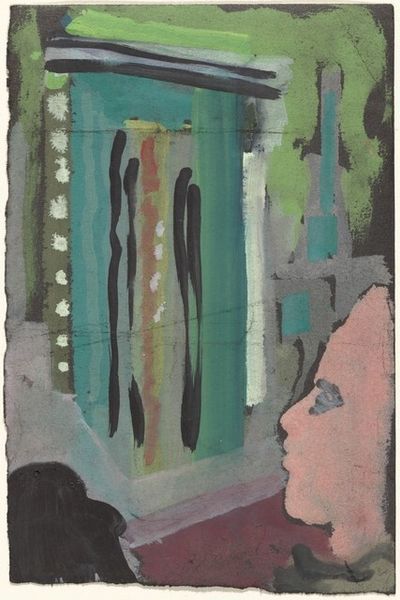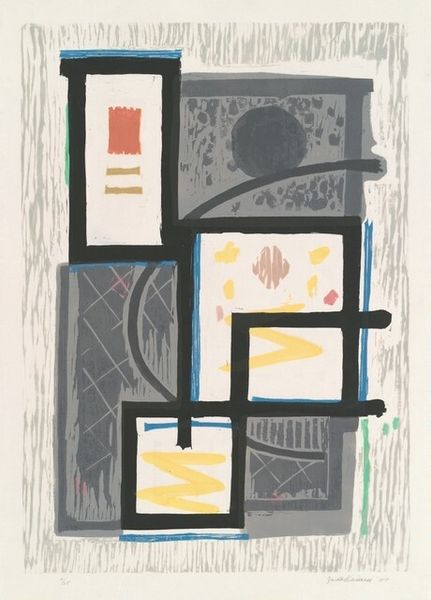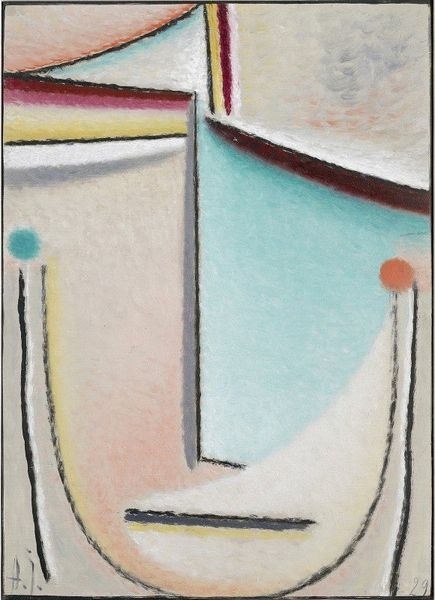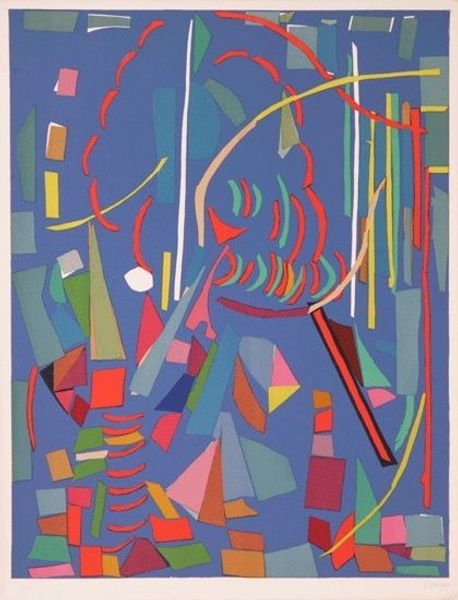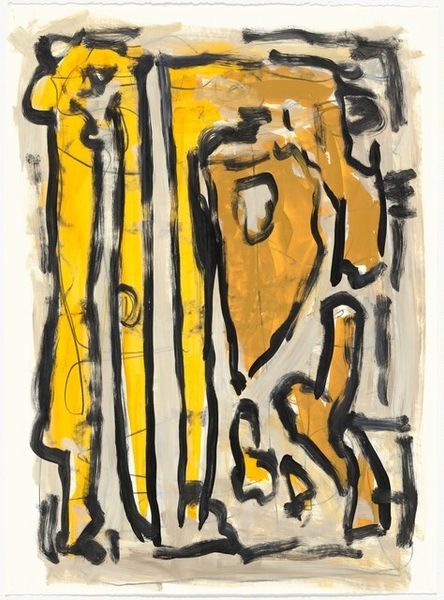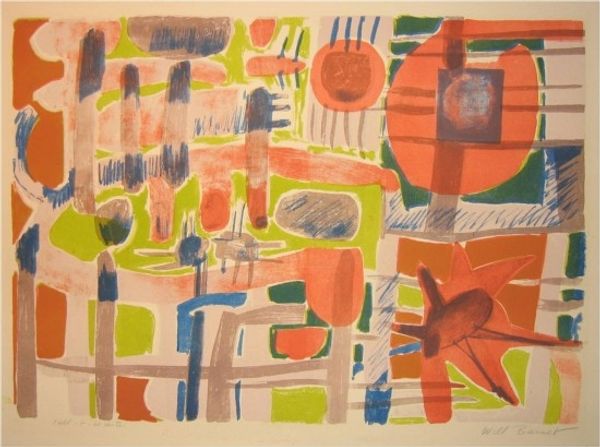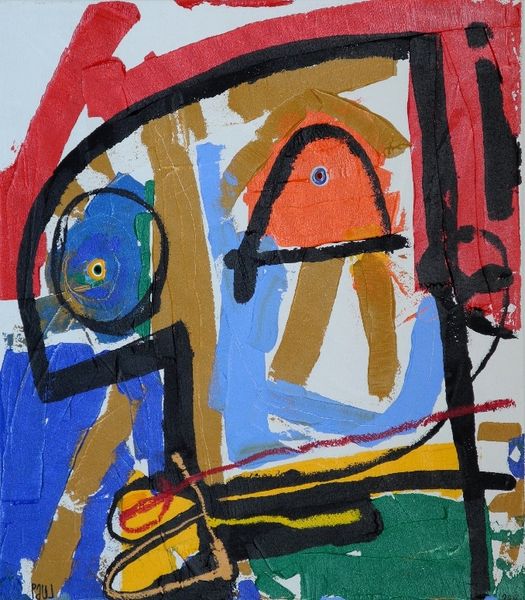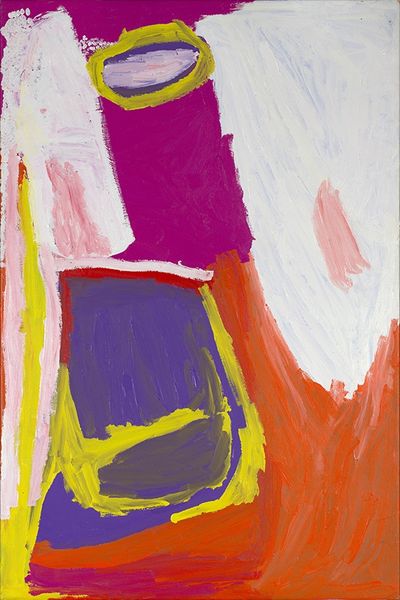
print, pastel
#
abstract-expressionism
# print
#
form
#
geometric-abstraction
#
abstraction
#
line
#
pastel
Dimensions: plate: 47.9 x 31.7 cm (18 7/8 x 12 1/2 in.) sheet: 39.8 x 50.8 cm (15 11/16 x 20 in.)
Copyright: National Gallery of Art: CC0 1.0
Curator: Let’s consider this pastel print titled "A New Year," created in 1960 by Max Ackermann. What strikes you initially? Editor: It's fragmented and hesitant. There's an asymmetry here that is palpable, not visually harmonious but rather, disjointed, with shapes in conflict. Curator: Notice the composition. Ackermann has divided the picture plane, employing contrasting color blocks on either side, punctuated by linear elements, and the rough texture allowed by the pastel medium. Editor: I'm curious about that division. It evokes a sense of fractured hope, or maybe the uncertainty of a transition, using the symbols of celebration such as vibrant colors yet hinting to the fragility of such sentiments, or how subjective these moments really are. Curator: Perhaps that division echoes a certain tension inherent within the style. It is a play between abstraction and geometric formalism. It challenges the viewer to find harmony within deliberate dissonance. Note that the geometry almost imposes a structure where fluidity seeks expression, and pastel offers the tactility needed for expression. Editor: But look at these lines. Those broken shapes seem less like precise geometry and more like coded signifiers of instability. Also, given its creation date, do you feel it might reflect postwar anxieties and the reshaping of societal norms? I believe these symbols may resonate with more profound psychological undercurrents related to collective identity and renewal. Curator: An intriguing proposition. Perhaps these lines also reinforce structural forms, dividing and joining segments. There is order amid chaos when closely inspected. The interplay between control and freedom becomes integral. Editor: It's that dichotomy which lingers for me. What begins as visual, ultimately speaks to our innate human capacity to find solace or apprehension during any kind of transition in our lives. Curator: The tension and balance, whether intentional, or subconsciously represented in this composition—of color, line and form—creates something potent for observation and experience. Editor: Absolutely. It gives viewers something to interpret, a lens for viewing transitions within our history, or transitions and symbolism related to our personal lives.
Comments
No comments
Be the first to comment and join the conversation on the ultimate creative platform.

